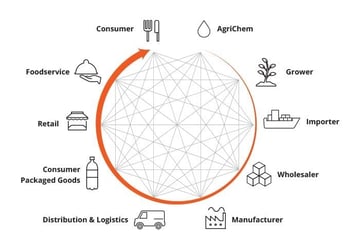While price and taste certainly still rank high among consumers when it comes to purchasing behavior, they also want a deeper understanding of exactly what it is they are eating. According to the International Food Information Council (IFIC) Foundation, U.S. consumers want to learn more about the origins of their food and its entire journey from farm to fork.
“Americans have a growing appetite for more information about their food, and technology is enabling eaters like never before,” said Joseph Clayton, CEO of the IFIC Foundation. “It’s also driving transparency across the food supply chain.”
In a report released this week, the IFIC Foundation predicts that 2019 will bring a larger focus on the food journey, greater attention to food safety and allergens, continued consumer concern about sugar and increased popularity of plant-based eating.
The 2018 Food and Health Survey revealed over half of respondents indicate recognizing the ingredients, understanding where food is from and the number of ingredients as key factors that impact purchasing decisions. Interestingly, women were more likely to rate these factors as more important when compared to men. In addition, compared to 2017, more Americans cited that understanding how the food is produced altered their decision to buy a food or beverage.
The report also reveals that plant-based eating is gaining popularity among Americans, with sales growing by 20 percent since 2017. While only 4 percent of Americans identify as vegetarians or vegans, according to the 2018 Food and Health Survey, many others cite following diets that are typically high in veggies, such as paleo (7 percent), low-carb (5 percent), Whole30 (5 percent) and high protein (4 percent). Also, vegetables are the second most popular food or food component people are seeking to provide health benefits (7 percent), behind protein (10 percent).
FoodLogiQ uncovered similar trends when surveying over 2,000 U.S. consumers to gauge their sentiment around food traceability and expectations for food companies regarding recalls and foodborne illness. Additionally, the survey posed questions around consumer preference for the identification of food sources with regard to labeling and menus.
With regard to transparency in labeling, 54 percent of respondents want as much information as possible on the label, and nearly 40 percent want country of origin, allergen alerts and GMOs all identified on the label. To read all the findings, download the free white paper, A Food Company’s Guide to What Consumers Care About in the Age of Transparency.
Other posts you might be interested in
View All Posts
Traceability
3 min read
| January 16, 2020
Food Safety Matters: Partnering on Food Traceability and Transparency
Read More
Supplier Compliance
4 min read
| May 15, 2019
Supply Chain Complexity and the Importance of Traceability
Read More
Food Safety
8 min read
| February 7, 2017

